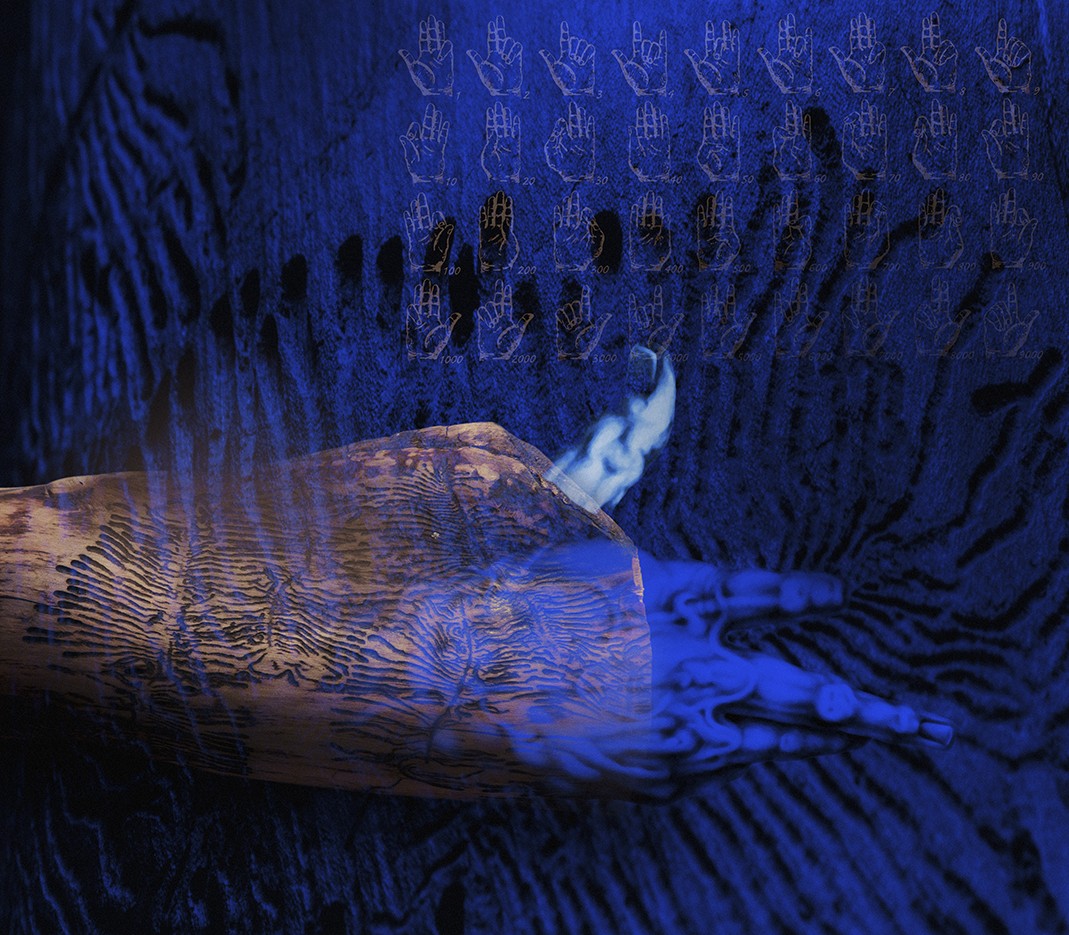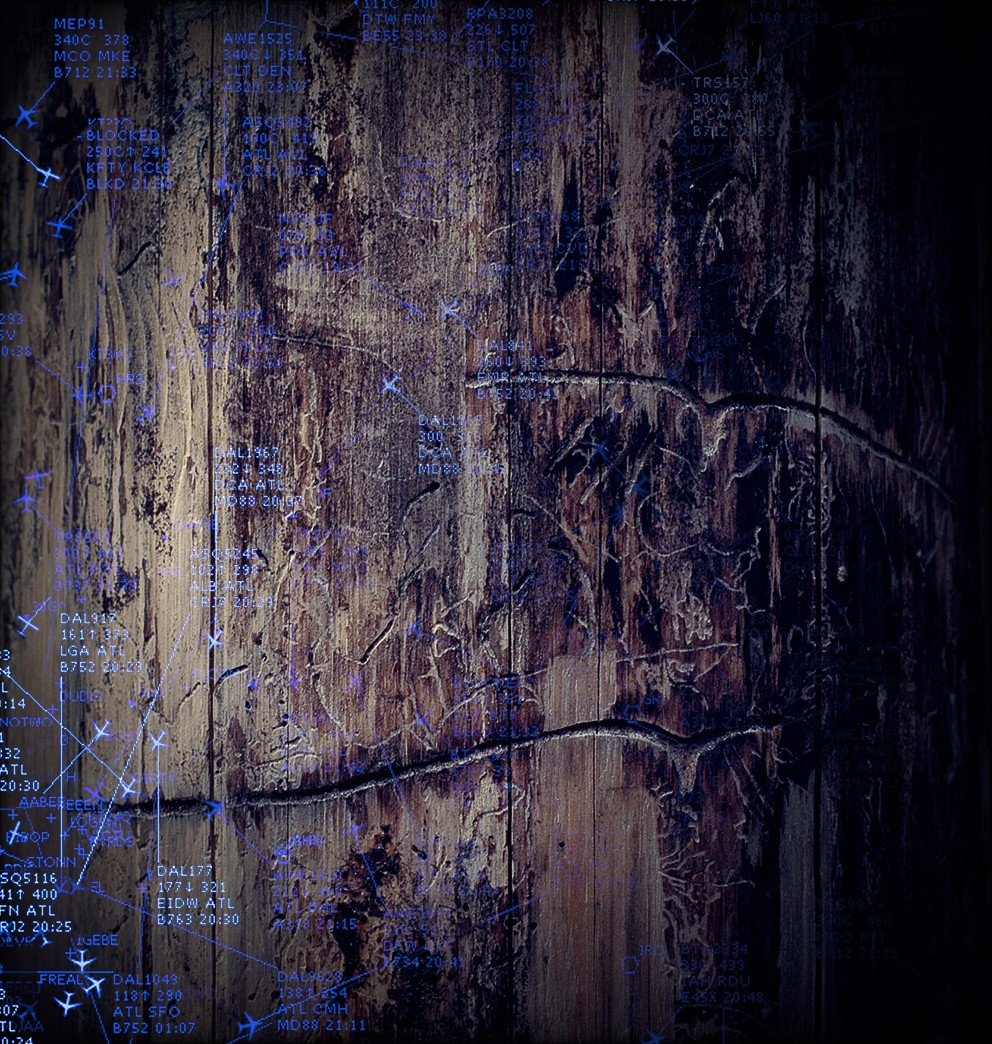Published on
30.06.2023
Peeter Laurits is an artist who has enriched photographic means of expression and expanded the role of photography in the Estonian cultural space. Thematically, his work focuses on the paradoxical aspects of being alive and relationships with other forms of life. He curates the international series of conferences and art events Biotopia.
The term post-industrial landscape describes a former industrial area where economic restructuring has taken place and industry has been replaced by services and the information society. As a result, many former factories and industrial facilities have been closed and abandoned, and the surrounding areas have become neglected, unfavourable environments. The post-industrial landscape often includes vast empty areas, dilapidated industrial buildings, contaminated soil and water and scarce residential and economic activity. However, these areas have the potential to regenerate and develop new functions, such as housing, offices, shopping and recreation centres or green parks and other leisure areas. The post-industrial landscape can also be a valuable historical heritage that needs to be preserved and protecte

This is how the post-industrial landscape was defined by the ChatGPT text generator. I gave it a chance to speak, since the text generator and similar other memes increasingly shape our mental landscape. There is actually nothing wrong with the definition generated above – it also has tolerable Estonian language skills. Good work! The certain dryness and bureaucratic use of language has a bit of an annoying effect; however, if asking the text generator to form ideas on some more abstract and existential subjects then what makes it even more depressing, besides the blathering officialese, is the hysterical degree of being politically correct as well as the lack of statements and sense of humour. There is no point in holding a philosophical debate with this character. In the end, the generator is still a baby. Let’s return to it later and first observe the world where it was born into.
Charles Jencks has accurately dated the emergence of postmodernism. The demolition of the Pruitt-Igoe residential building district in St. Louis (MO) started on 16 March 1972. Pruitt-Igoe was an urban housing project designed in the modernist architectural style by Minoru Yamazaki. The eleven-story high rise buildings formed a dormitory district without infrastructure or green areas. The project was praised as a revolutionary act in the world’s urban renewal; the majority of post-war former Soviet countries and other poor countries consist of such spreadsheet-like micro-districts. In Pruitt-Igoe, the mechanical, uniform living environment, the lack of infrastructure, extremely poor construction quality and segregation of the poor created such a toxic milieu that no one wanted to live there. The district emptied and quickly turned into a vandalised criminal haunted house. Due to the lack of money, the local government was unable to improve the living conditions in the area and eventually decided to demolish the micro-district with controlled detonation. The series of explosions formed the spectacular and symbolic collapse of the modernist vision. Exploding and bulldozing the area took four years. Even today, there is a 23-hectare-wide scrubland restricted by chicken netting in the middle of St. Louis – a post-industrial landscape with symbolic value.


Leaving aside richer countries and wealthier cities, the majority of human settlement resembles the above mentioned impoverished and vandalised landscape. Endless slums and suburbs, wastelands behind gas stations, poisoned monoculture farm fields, dumps of industrial and mining areas, ravaged forestlands – all these territories of hundreds of kilometres remind us of the heavy price we have to pay for our obsession with infinite growth. When looking down at the bright lights on Earth during a night flight, one starts to perceive the scale of the devastation; however, our imagination is unable to grasp the full extent of all these issues.
The human species has caused such colossal and complex phenomena – mass extinctions, impoverishment of biodiversity, climate change, scarcity of freshwater, acidification of the oceans and poisoned living environments – are all too unfathomable to understand. These are something that Timothy Morton has called ‘hyperobjects’.
Postmodernism tried to destroy technocratic rationalism, individualism, bureaucracy, the cult of progress and monomaniacal market fundamentalism; however, this kind of thinking has no other platform than a critical gaze and postulation on the ruins of modernism. The deconstruction of big narratives is not enough to collect people; therefore, postmodernism did not become the importer of the new worldview – it remained a fragmented, elitist trend providing keywords that were too cryptic for most people. At the same time, dark and hyper objective northern lights were rippling above our heads.

On 11 September 2001, two hijacked planes crashed into the Twin Towers of the New York World Trade Center. The whole world followed everything in real time – the information and entertainment society had become mature – and the former world kept collapsing in slow motion while the whole world was watching. While looking back at this now we are seemingly also looking back at the way the end of the former world order began
The Anthropocene has become the dominant cultural definition of this century. First of all, this term denotes a new geological era where the human impact on the Earth’s crust, biosphere and ecosystems has grown dangerously. It is debated whether the industrial revolution, first nuclear bomb tests or something else should define the beginning of the Anthropocene. What is clear is that the traces of microplastics, heavy metals and radioactive pollution will remain in geological formations for tens and hundreds of millennia.
The Stratigraphy Commission of the Geological Society of London is still in the process of recognizing the Anthropocene as an official geochronological unit, but the term itself has been widely used for quite some time now. In addition to the language of geologists, ecologists and atmospheric scientists, the term has also migrated into cultural discourse, denoting a whole range of practices in literature, art and cinema, as well as launching several fresh forms of environmental activism and cultural criticism. And at the same time, the world continues to roll backwards towards the abyss.
Despite the fact that the UN climate conferences have repeatedly warned that our generation is the last one to stop irreversible processes, the governments with their subcontractors being large corporations are extremely sluggish in taking decisive steps. The activities of various authorities are limited to the formulation of bureaucratic campaigns such as the green turn, renewable energy and sustainability; decelerating the rate of economic and population growth is still an uncomfortable taboo topic. The main concern has been how to return to the former normality after the pandemic. Half of all plastic has been produced during this century. We have already exceeded pre-Corona pandemic CO2 emissions. There are no signs that anyone is going to pull the emergency brake.
New post-industrial landscapes are currently being produced at an industrial pace in Ukraine, Syria, Yemen, Iraq, Afghanistan, Nigeria, South Sudan, Palestine and Turkey. The scope of damage done to ecosystems and the atmosphere is difficult to imagine or to express in numbers. For more than 2,000 years, the war economy has been the dominant economic branch of our culture, our history is the history of wars, and the military industry is the most privileged, most subsidised and fastest growing field of industry. In the near future, great prosperity can be predicted for the military industry, as rising sea levels, scarcity of freshwater and the huge amounts of refugees will cause more frequent armed conflicts. Due to the accelerating melting of the Himalayan glaciers, military action is expected in India, China and Pakistan as two billion people are about to live without water and food. Most obviously it won’t leave the rest of the world untouched.
When we think about the future landscape, it will most likely be characterised by desertification, erosion and dust fields over large areas. In fact, we can only guess what lies ahead, since systems out of balance are unstable and unpredictable. We know that ocean acidification will change the course of currents – and even if we are able to calculate the new possible trajectories of currents it is impossible to foresee what it entails in the big picture since it is beyond the capability of algorithms. Too many parameters are still unknown. We will face unexpected situations. Such drastic shifts have never taken place before during the history of humankind, and coping with these will require completely new traits of personality from the new generations.
However, the post-industrial landscape is characterised by another unique factor – to a large extent, this landscape is virtual. By the end of the 20th century, television had become the main window to the world for many people. Today, no one can imagine life without a smartphone, computer and the internet. According to DataReportal, in October 2020 the average screen time of humankind was 6 hours 45 minutes per day. All in all, people spend 10 billion hours on social media platforms every day, which adds up to more than a million years of human existence. Every day. Impressive, isn’t it? It is easy to understand that the virtual landscape is predominantly imaginary, made up mainly by the expectations, imaginations and prejudices of the user community. One of the reasons why people have such a hard time understanding the scale of the environmental crisis is the possibility to escape at any moment to a parallel world where everything familiar to us remains the same. Which is certainly just an illusion because our post-industrial society is extraordinarily fragile and vulnerable when we think about the possibility of a large-scale blackout.
In addition to the entertainment function, the virtual world still has so many other functions. Numerous disasters, such as the Arab Spring and the war in Ukraine, have proved how helpful effective communication channels are in critical situations. The radical change introduced by artificially intelligent memes affects the school system. The situation where any student can generate a report or a research paper on a phone in a few seconds makes us rethink the definitions of education, knowledge and wisdom. Also, what kinds of abilities we would like to see in people with the help of our education system. The current school system, the legacy of the industrial society of the 19th century, has actually gone bad a long time ago. If the nature of education does not fundamentally change, we will soon have a severe shortage of people able to adequately respond to this unprecedented situation or collaborate with self-learning systems. And yet, these are one of the few tools that would help us relieve the environmental crisis; of course, if there is the political will. And if we don’t figure this all out very soon, we can easily end up in a post-apocalyptic landscape instead of a post-industrial one.
References
- OpenAI. (2023). ChatGPT (Feb 13 version), large language model, <https://chat.openai.com/>.
- Dietmar Kamper and Christoph Wulf (editors), Looking Back on the End of the World (New York: Semiotext(e), 1989).